The sum of all elements and the existence of the whole, more works of Fletchers Lake
Statement
The sum of all elements and the existence of the whole, more works of Fletchers Lake, alludes to our temporal or incomplete understanding of environmental issues. Like a jigsaw puzzle, all of the pieces are required before we can see the total picture.
The vehicle used to carry this meaning is the symbol or metaphor. The circle not only denotes the shape of the lake, but has significance as search for wholeness, completeness or perfection (as in Zen Buddhism) or with the Australia’s central desert people, as symbol of order in their natural world. Water is the most essential element in semi-arid landscapes. It sustains life. A Lake without water has forfeited its legitimacy. The cycle of environmental change, the ebb and flow of renewal and destruction are continuous on the lake floor. The images of water towers, sprinklers (purveyors of water), and artificial turf contrast the amoebic encrusted shapes imbedded into the lake itself.
The tainted, blistered, wrinkled and perforated paint emulates the surface qualities on the lake. The process of painting itself is likened to the processes of nature with its cycles of rain, wind, and heat.
Always wary of over intellectualising the work process, l do however synthesise the other ideas, theories and visual sources. Dante’s Inferno, the French novelist, George Perec in his jigsaw puzzle inspired, life a users guide, Tim Radford’s The crisis of life on earth, the earth works of Robert Smithson and Michael Heizer, Joseph Beuys, Chicago artist, Michael Paha’s de-contextualising organic material into the gallery space, Kiefer’s Dien Goldeness hear Margarette, Alan Sonfist, Nicholas Arbatsky’s Valdez oil spill blottered canvasses, Per Kirkby and Ian McKeever,etc.
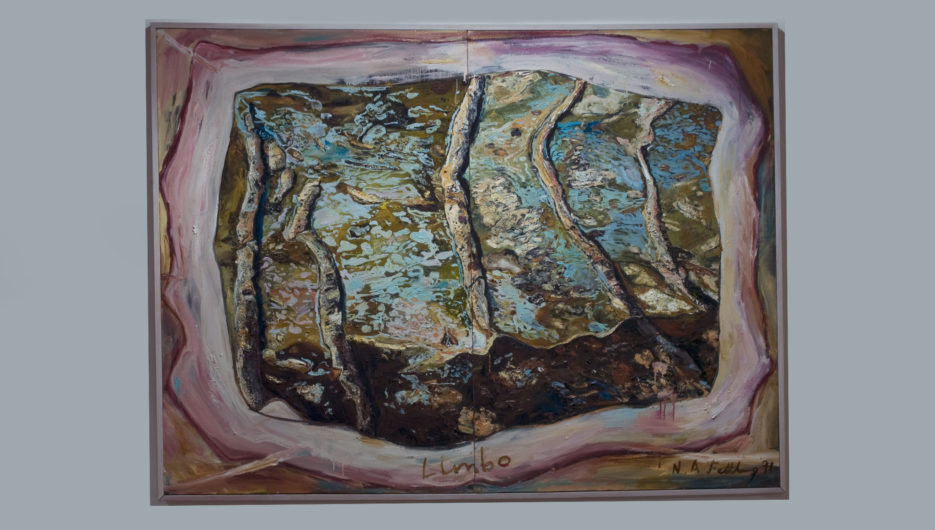
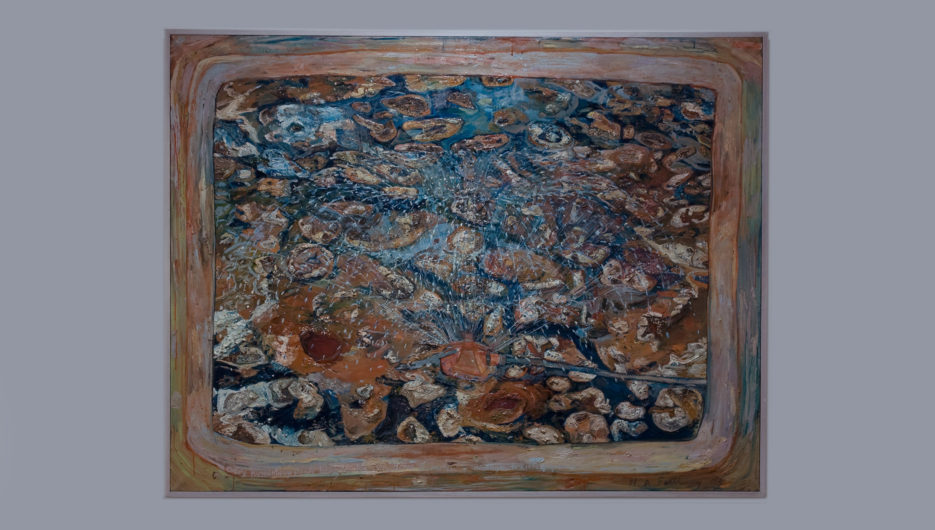
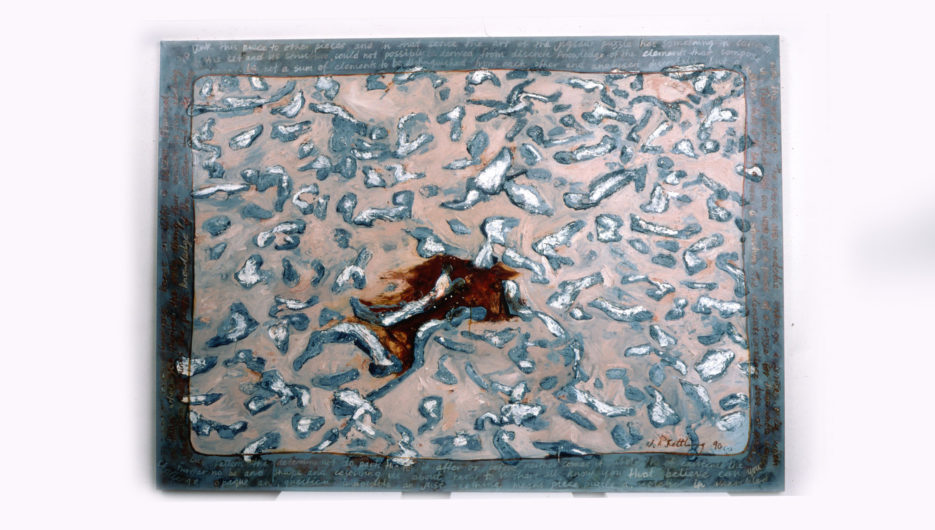


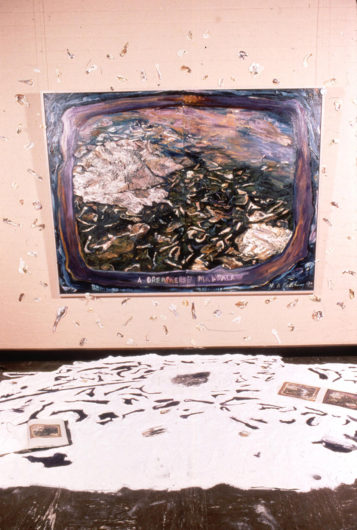
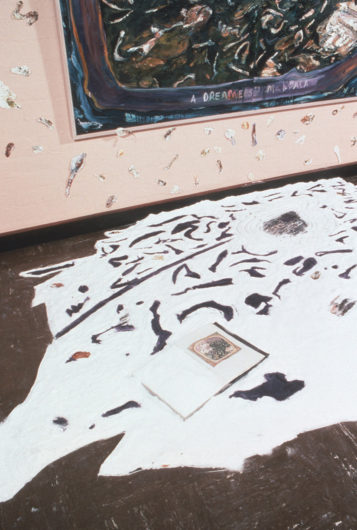
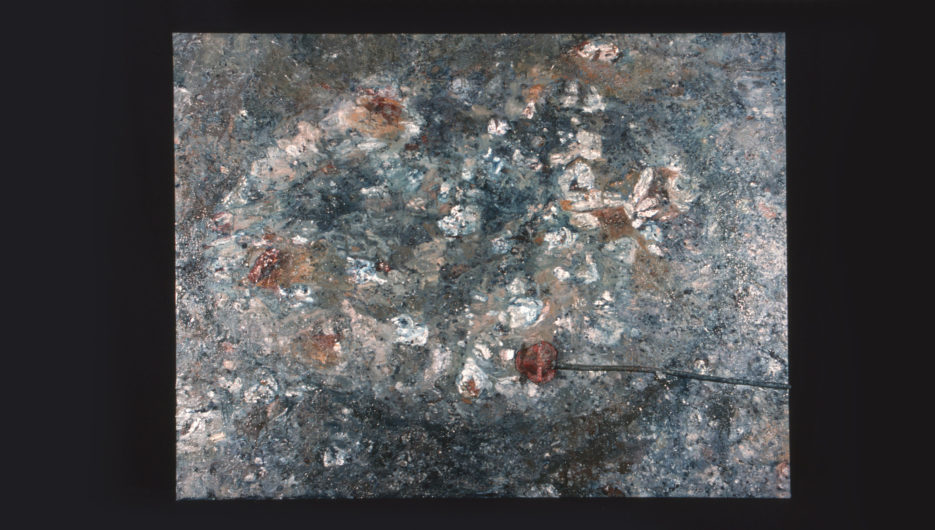
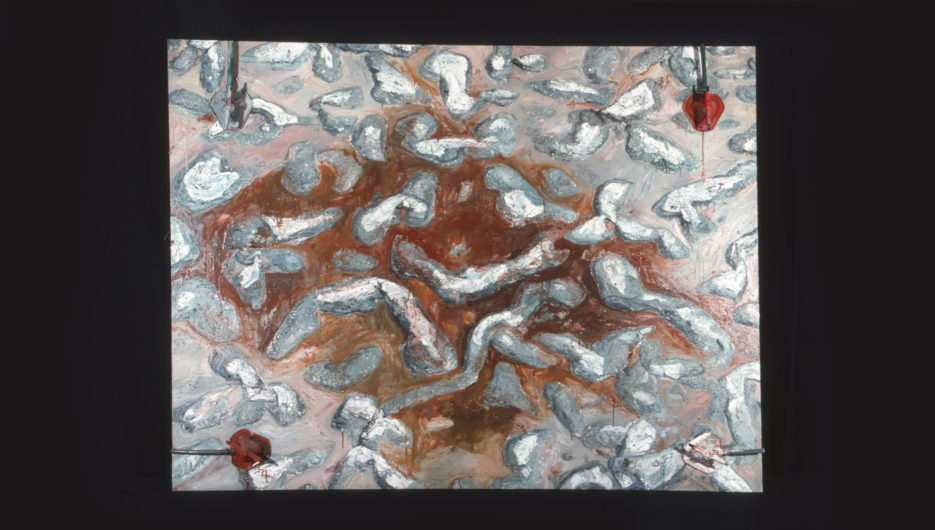
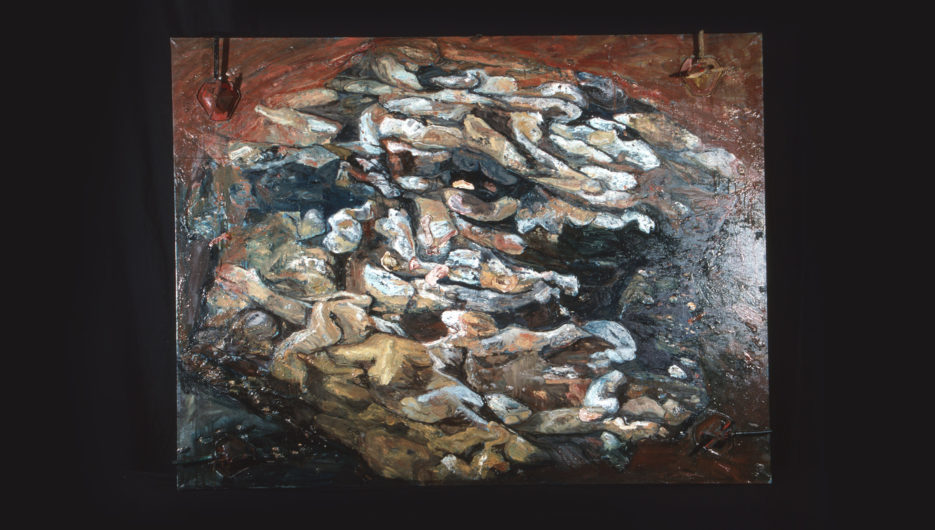
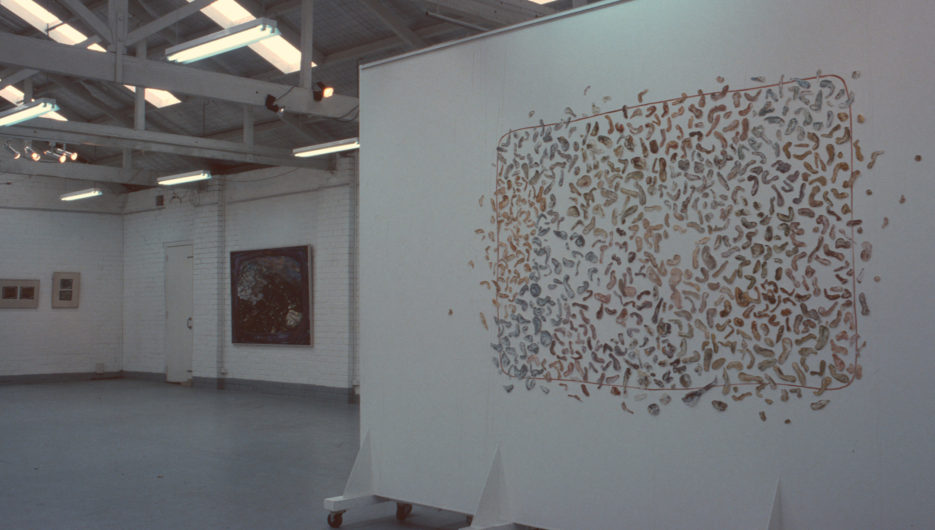
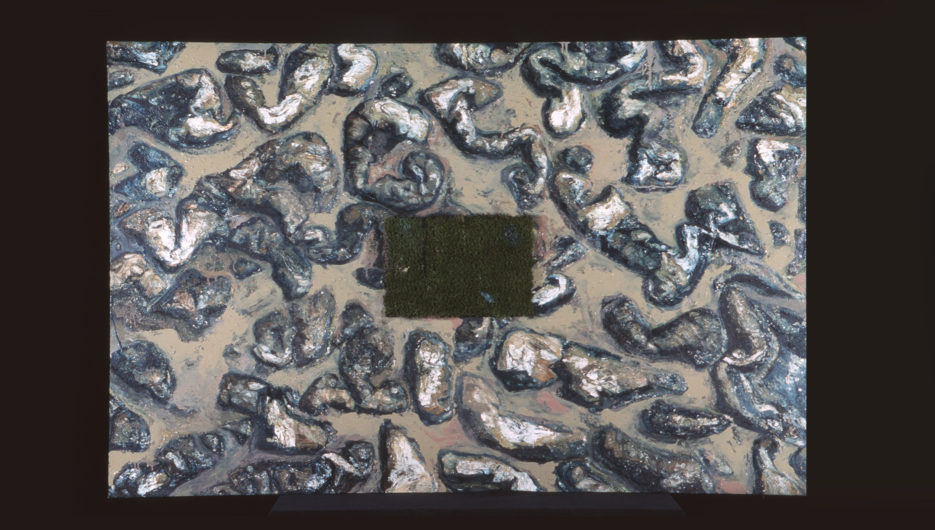
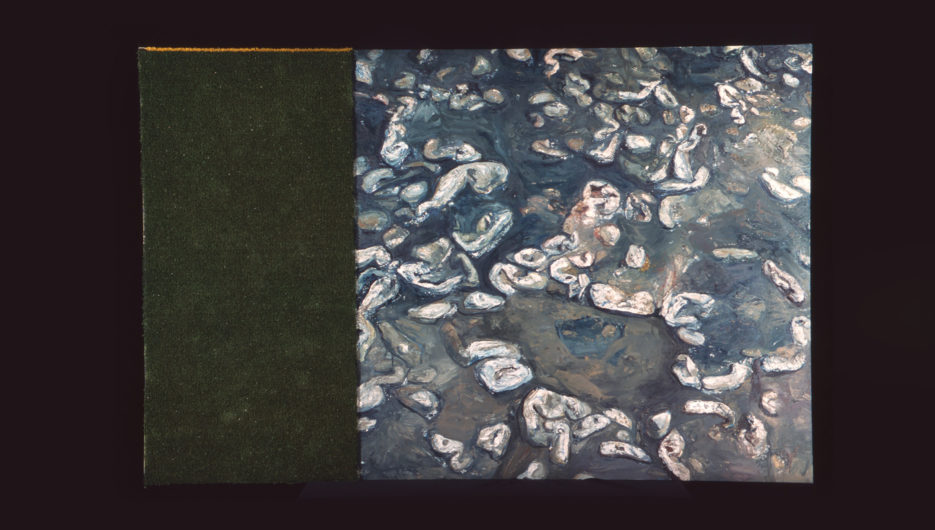
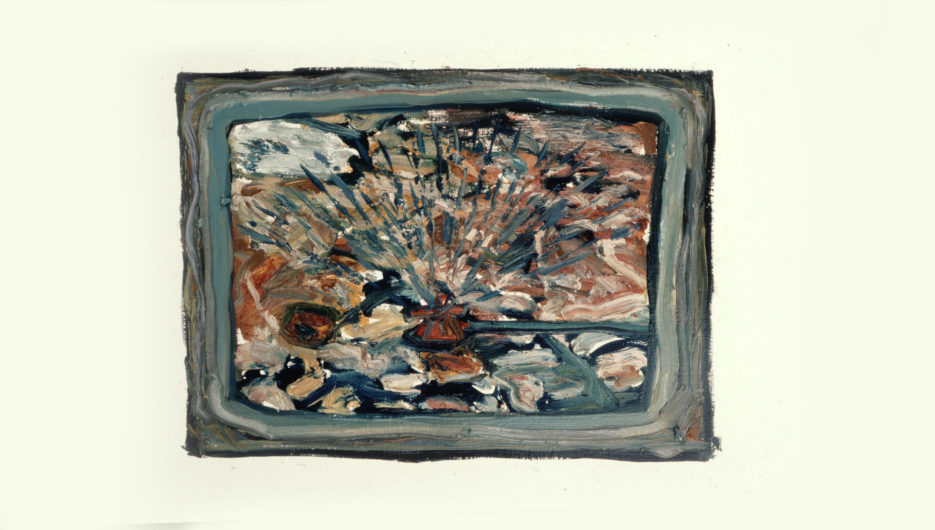
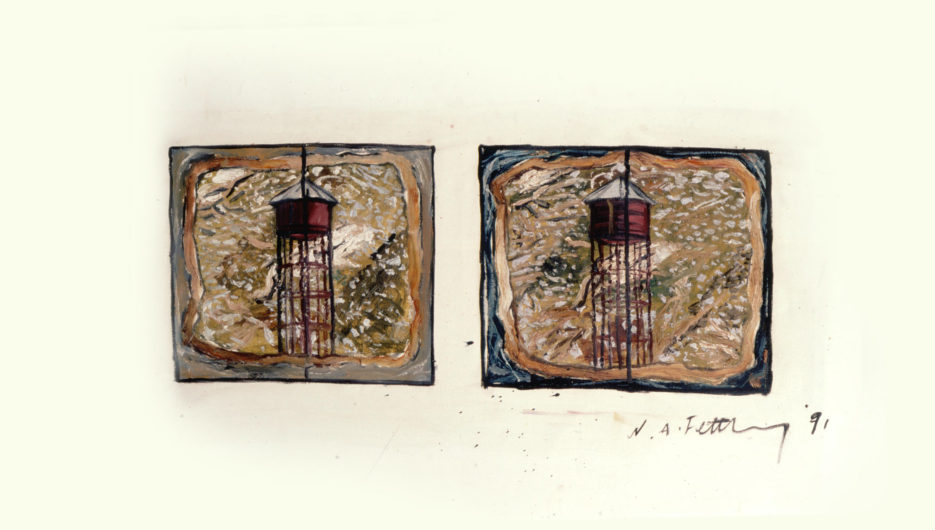
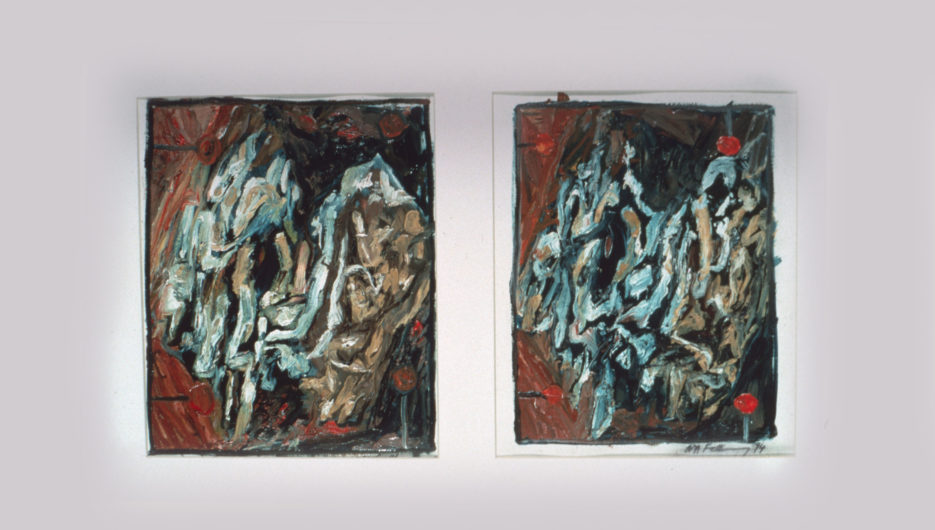

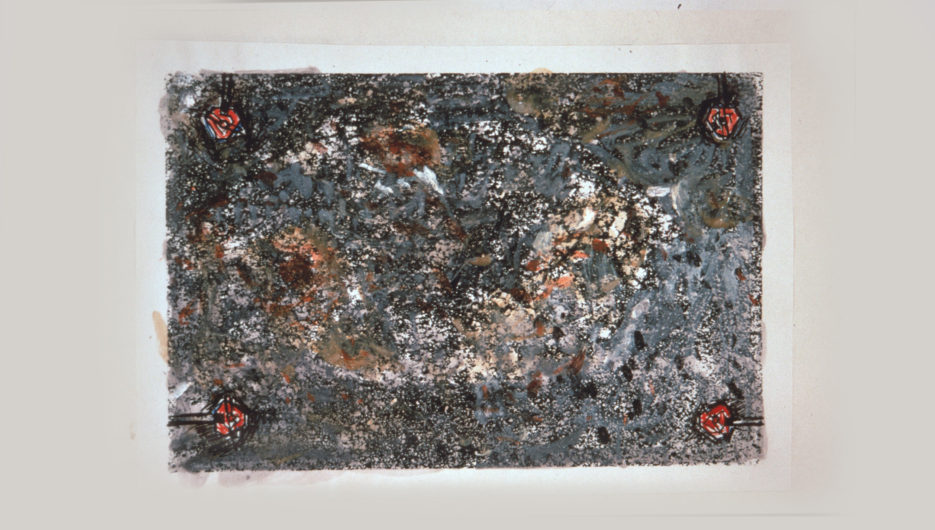
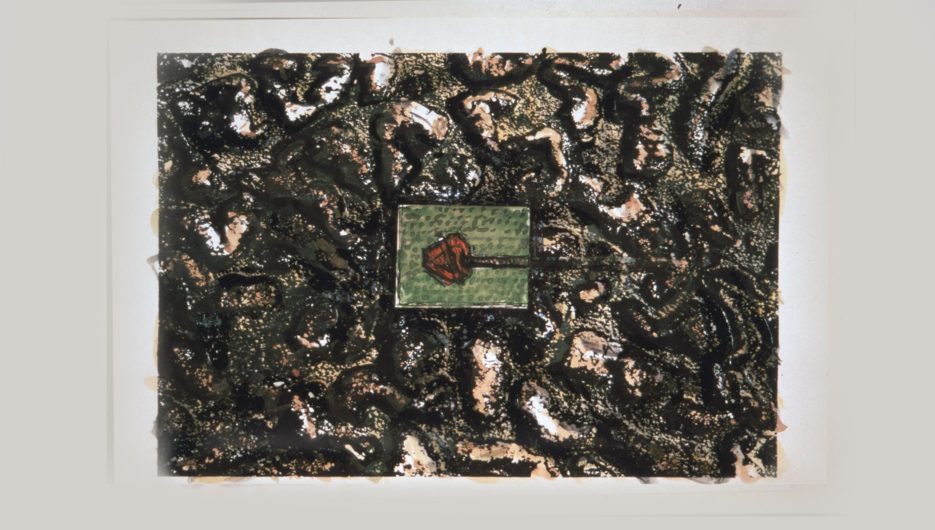
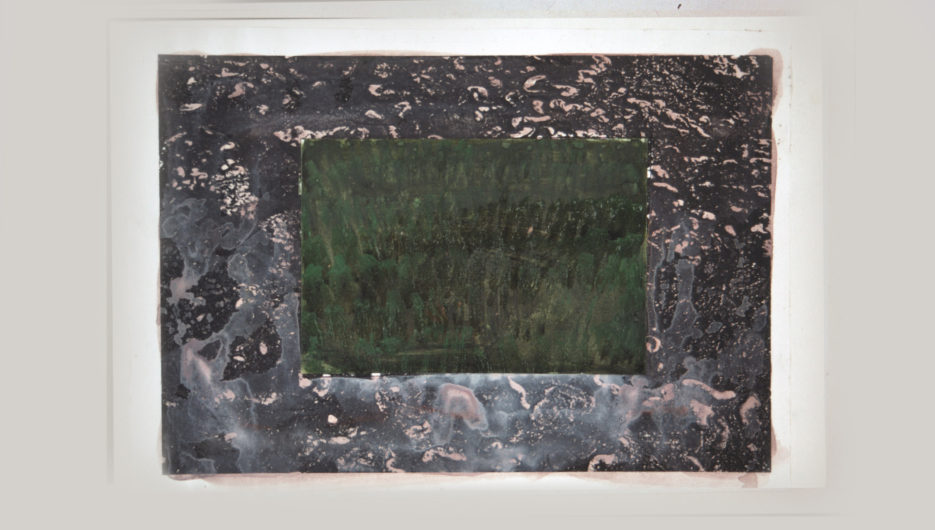
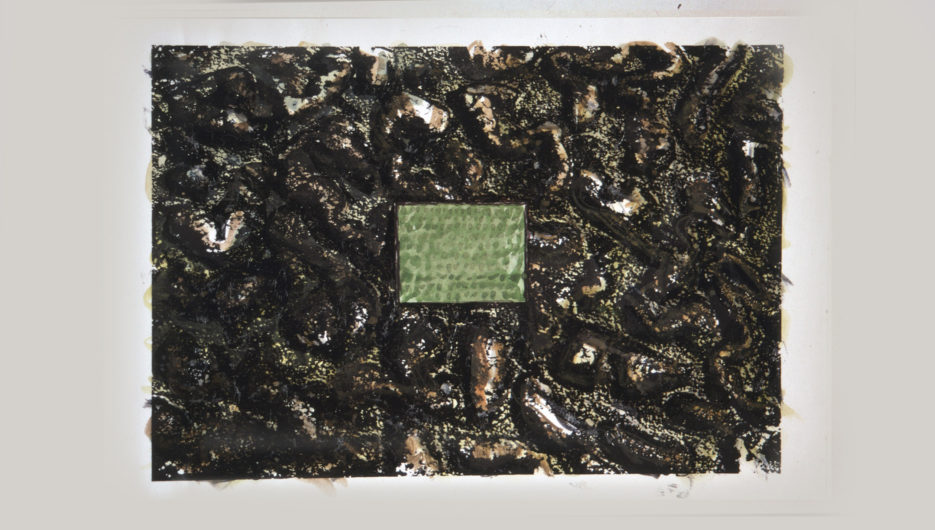
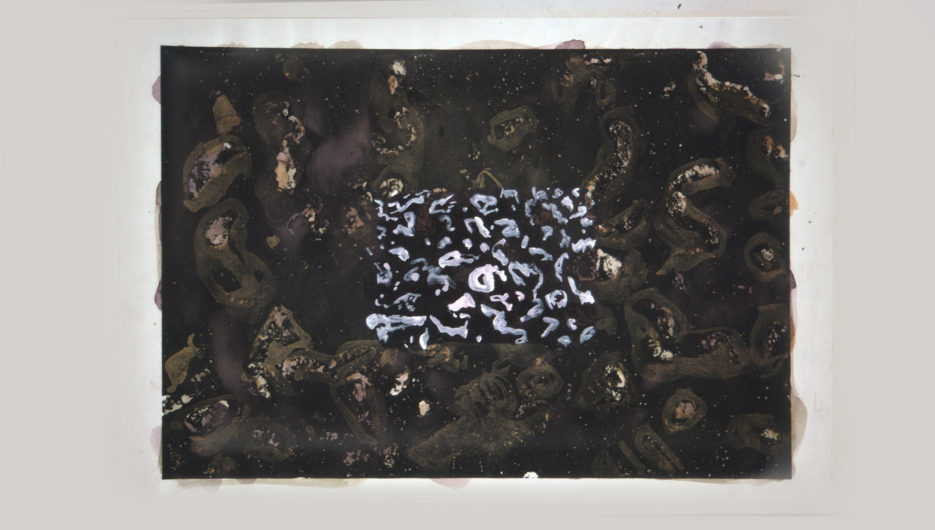
Categorised in: All works, In footer
This post was written by Alex Fettling